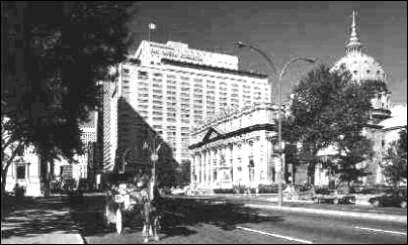 Quick Facts
Quick Facts
Date: June 10, 1971
Site: The Queen Elizabeth Hotel
Host City: Montreal
Draft History
The ninth NHL Amateur Draft revealed the power of the draft pick as a trade commodity. In the two years leading up to the draft, stronger teams had begun a practice of trading veterans for weaker teams' first-round picks. They sometimes went so far as to "protect" those picks by dealing players to help other teams in tight races with the teams whose picks they owned. A glaring example of this was Montreal's deal that sent Ralph Backstrom to Los Angeles on Jan. 26, 1971. The Canadiens owned California's No. 1 pick, but Los Angeles was threatening to finish below California in the final standings. By helping the Kings, the Canadiens were able to keep the Golden Seals in last place and would ultimately select future Hall of Famer Guy Lafleur with California's No. 1 overall pick. In all, six of the 14 first-round picks were traded prior to the draft. At the time, NHL president Clarence Campbell said he was distressed by this phenomenon because it would defeat the purpose of achieving long-term parity for the expansion teams. He singled out Montreal general manager Sam Pollock, who had orchestrated multiple deals, including the one for Lafleur, when Campbell said: "If we are ever going to get parity in the NHL, some embargo must be placed on the trading of amateur draft choices. The clubs should at least wait to see what they've got in these amateurs before virtually giving them away. Sam needs the first draft choices for five years like I need a hole in the head."
The Basics
| Eligible For Draft: | Amateur players born between Dec. 23, 1950 (birthdate of the youngest player selected in 1970), and Dec. 31, 1951. |
| Draft Order: | Teams drafted in reverse order of their 1970-71 finish. |
| Irregularities: | There was no set number of rounds. Teams had the right to pass or re-enter in any round, and the draft continued until all teams were done selecting. Montreal, Chicago and Boston passed in the eighth round. All teams except New York passed in the ninth round. Minnesota re-entered for Rounds 12 and 15. New York drafted in every round until passing in Round 15. Minnesota passed after Round 15 to end the draft. |
| Rotation: | California, Detroit, Vancouver, Pittsburgh, Buffalo, Los Angeles, Minnesota, Philadelphia, Toronto, St. Louis, Montreal, Chicago, New York, Boston. |
| Total Rounds: | Fifteen |
| Cost to Draft: | Each of the drafted players cost an outright fee of $3,000. Teams would pay an additional $3,000 for each player who signed a pro contract for the 1971-72 season. Teams would pay another $5,000 for each player who appeared in an NHL game during the 1971-72 season. As a result, the players who jumped right to the NHL in 1971-72 cost a total of $11,000 each. Teams did not compensate individual junior franchises for their players, instead the league continued the process of paying all draft-related money to the Canadian Amateur Hockey Association in order to support major junior hockey as a whole. The CAHA was technically responsible for making sure that amateur teams received more money if they were producing more draft picks. |
| Draft Rights: | Team could offer player contract at any time after draft. |
Draft Recap
| No. 1 pick: | Guy Lafleur (by Montreal) |
| Reached NHL: | 50 players (42.7 percent) |
| Won Stanley Cup: | Five players (4.3 percent) |
| Most NHL Games: | Larry Robinson (1,384 games) |
| Most Playoff Games: | Larry Robinson (227 games) |
| Highest Pick to Miss: | No. 12 (Dan Spring) |
| Lowest Pick to Reach: | No. 113 (Mike Antonovich) |
| Players Drafted: | 117 (63 forwards, 45 defense, 9 goalies) |
| SNAPSHOT '71 | |
| Total Selected: | 117 |
| Forwards: | 63 |
| Defense: | 45 |
| Goaltenders: | 9 |
| Major Junior: | 84 |
| College Players: | 19 |
| Canadian: | 107 |
| Euro-Canadian: | 2 |
| American: | 8 |
| European: | 0 |
| Reached NHL: | 50 |
| Won Stanley Cup: | 5 |
| Hall of Fame: | 3 |
| All-Star Game: | 10 |
| Year-end All-Star: | 5 |
| Olympians: | 4 |
| Picks Traded: | 18 |
